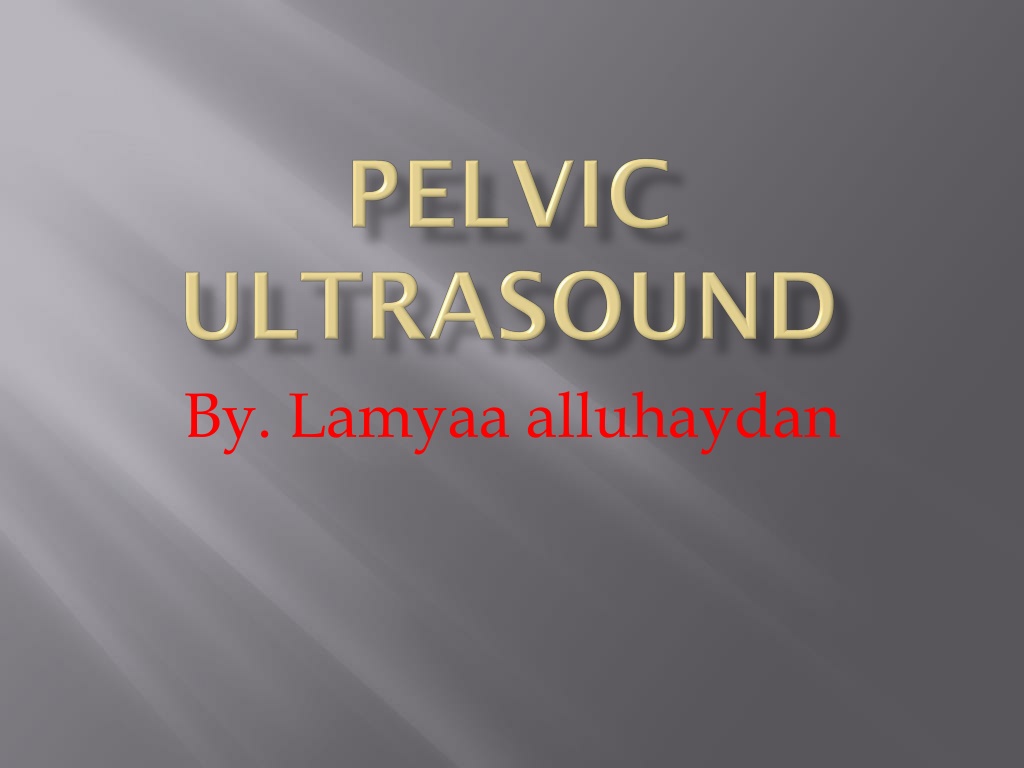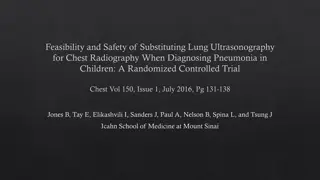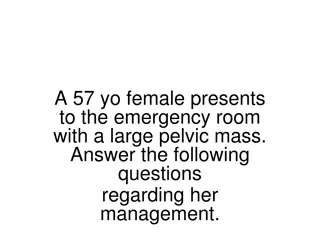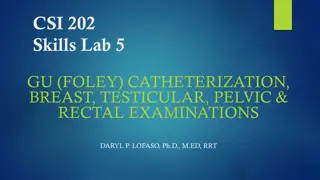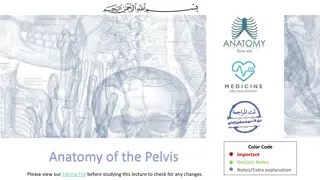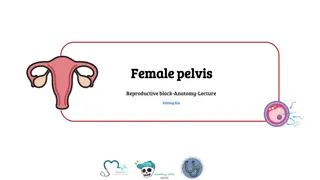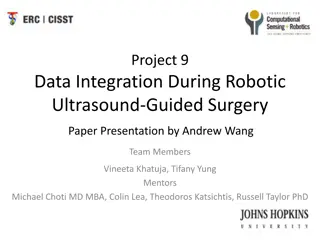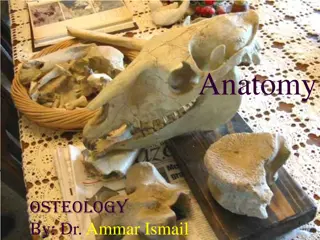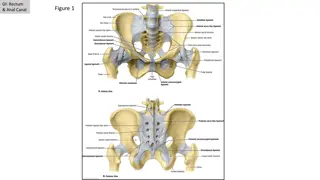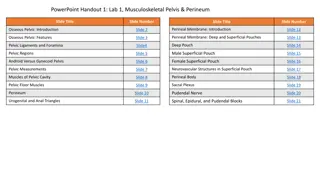Understanding Pelvic Ultrasonography: A Comprehensive Guide
Explore the detailed anatomy and variations of the uterus, ovaries, fallopian tubes, and adnexa in pelvic ultrasonography. Learn about the different shapes and sizes of the uterus, layers of the uterine wall, and indications for pelvic ultrasound examination. Discover the significance of the appearance of the uterus during different stages of the menstrual cycle and potential findings such as hydrosalpinx, pyosalpinx, ectopic pregnancy, and ovarian follicles. Gain insights into the normal and abnormal structures seen in a pelvic ultrasound, along with the importance of understanding a woman's full clinical history for a successful examination.
Download Presentation

Please find below an Image/Link to download the presentation.
The content on the website is provided AS IS for your information and personal use only. It may not be sold, licensed, or shared on other websites without obtaining consent from the author. Download presentation by click this link. If you encounter any issues during the download, it is possible that the publisher has removed the file from their server.
E N D
Presentation Transcript
-UTERES -OVARIES -FALLOPIAN TUBES -RT AND LT ADNEXA A SUCCESSFUL U/S EXAMINATION OF PELVIC CANNOT BE ACHIEVED WITH OUT KNOWLEDGE OF WOMEN'S FULL CLINICAL HISTORY: 1-AGE 2-USE OF ANY MIDECATION EX: TAMOXFINE (increase the thickness of endo. + Polyp) 3-USE OF CONTRACEPTIVE PILLS (thin endo) 4-POSTMENOPAUSAL
- Is a pear-shape organ . - it found in the midline of the pelvic , ant. To rectum and post. To U/B. -appearance of the uterus varies depending on the age and stage of menstrual cycle . - It divided in to parts: 1-fundus (dome shape) 2-body 3-cervix 4-vagina - It has a different shape and size: 1-ANTEVERTED 2-RETROVERTED 3-AXIAL 4-ANTI-FLEXED -postmenopausal (small uterus +invisible endo.) -after pregnancy (increase size)
-WALL OF THE UTERUS COMPOSED OF 3 LAYERS: 1) PARAMETRIUM : thin outer layer, it is highly echogenic on ultrasound and gives the uterus bright out line . 2) MYOMETRIUM muscular layer, normally homogenous. 3) ENDOMETRIUM -inner most layer of uterus . -variable depending on the timing of the menstrual cycle and effect of drugs. -range (0.5-1.4) cm ..conceder normal.
-(first half of the cycle: thin and hypoechogenic ). -(mid cycle: proliferative phase-the central part became hyperechogenic and surrounded by a hypoechogenic rim (3 alyers)). -(during the menstrual: hyper and thick).
- Can be seen if significant change occur: 1)hydrosalpinx and pyosalpix (accumulation of fluid or pus). 2) Ectopic pregnancy .
-Located in the ovarian fossa. -Inferior to the pelvic vessels on the lateral pelvic wall. -They are mobile structures . -Less homogeneous (than uterus). -OVARIAN FOLLICLES: -Are simple anechoic cysts with clear and well defined walls. -They grow until they reach: 2.0-2.5 cm in diameter before ovulation. -In postmenopausal , small ovaries are difficult to see with no follicles seen.
-Normal small amount of free fluid in bough of Douglas after ovulation . INDECATION OF PELVIC U/S: Vaginal bleeding, pelvic pain ,IUCD ,poly cystic ovary , pelvic masses ,,, etc..
Fibroids: -most common gynecological tumor . -most of the fibroid seen at uterine body and very rare seen on cervix. -clinical presentation, size and position of the fibroid are very important. -myometrium (intramural). -uterine cavity (submucosal). -serosaul surface (subserousal) . -(pedunculated )it can be mistaken with adnexal masses .
- it composed of smooth muscles fibers . -in pregnancy women usually increase in size. -it can be single or multiple and cause enlargement of uterus. -it has acoustic shadowing. -it might be area of calcification . -highly velocity blood flow .
Endometrial polyp : -common finding in women. -women present with vaginal bleeding, dysmenorrhea or infertility . -polyp arise from basal layer of endometrium and usually vascularized by single vessel. -they appear as hyperechoic area in the endometrium .
Endometrial hyperpleasia: -abnormal or irregular vaginal bleeding. - by U/S , the endometrium is thickened more than (1 cm). - increase echogenicity with multiple small cystic area seen.
POLYCECTIC OVARIES: -defined as an ovary that contains more than 10 cysts measuring (2-8 mm)-follicles. -increase ovarian stroma
MULTIPLE FOLLICLER OVARY: -ovary enlarged and contains six or more of follicles of vary sizes, without stroma. UNRUPTURED FOLLICLE: -appear as simple anechoic cyst with thick vascular wall . -it might reach a diameter of 3.0 cm.
SIMPLE CYST: -this cyst appear similar to follicle but larger in size. -it can occasionally reach more than 10 cm in diameter.
DERMOID CYST: -located on the ovary . -this cyst show a great variation in appearance. -it has cystic and solid area and usually poorly vascularized. -they display mixed echogenicity ,it might include areas of calcification due to bone or teeth ,which cast acoustic shadows. Hair inside the cyst can be recognized by the presence of speculation .
ENDOMETRIOMA: -located within the ovary . -these masses are usually having regular internal walls and contain echogenic fluid of a ground glass appearance .
